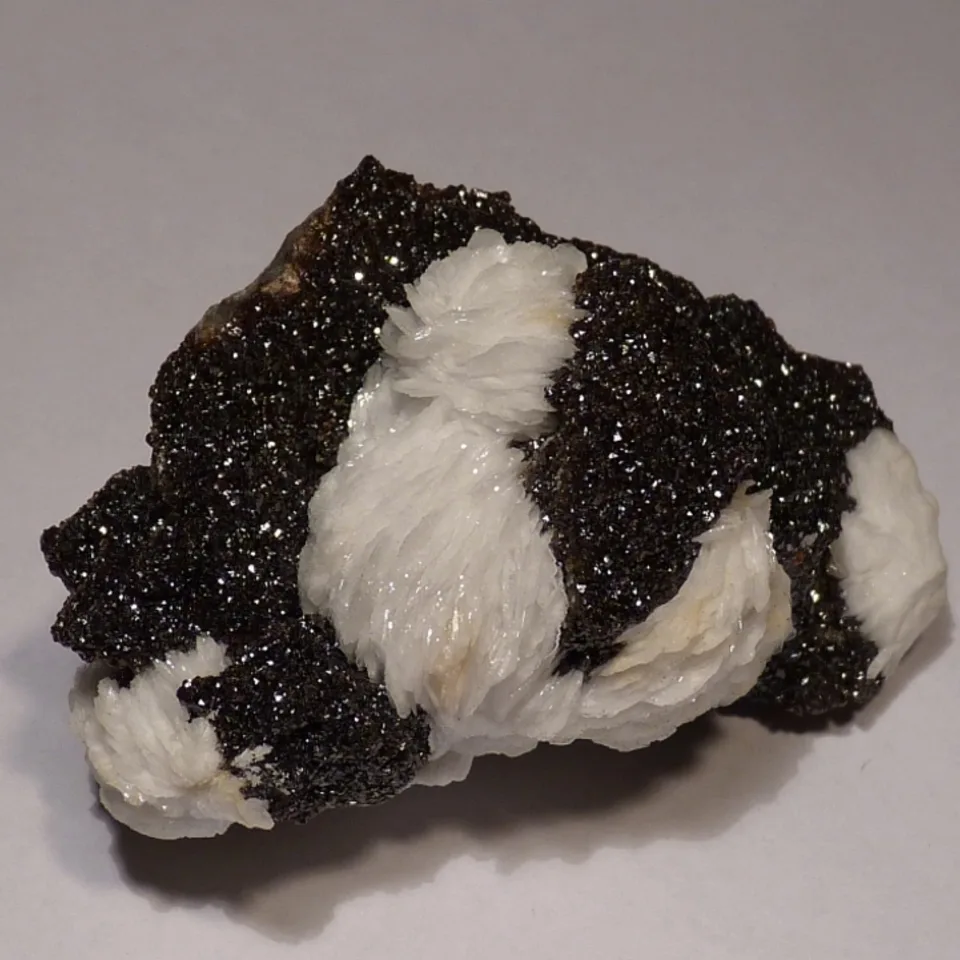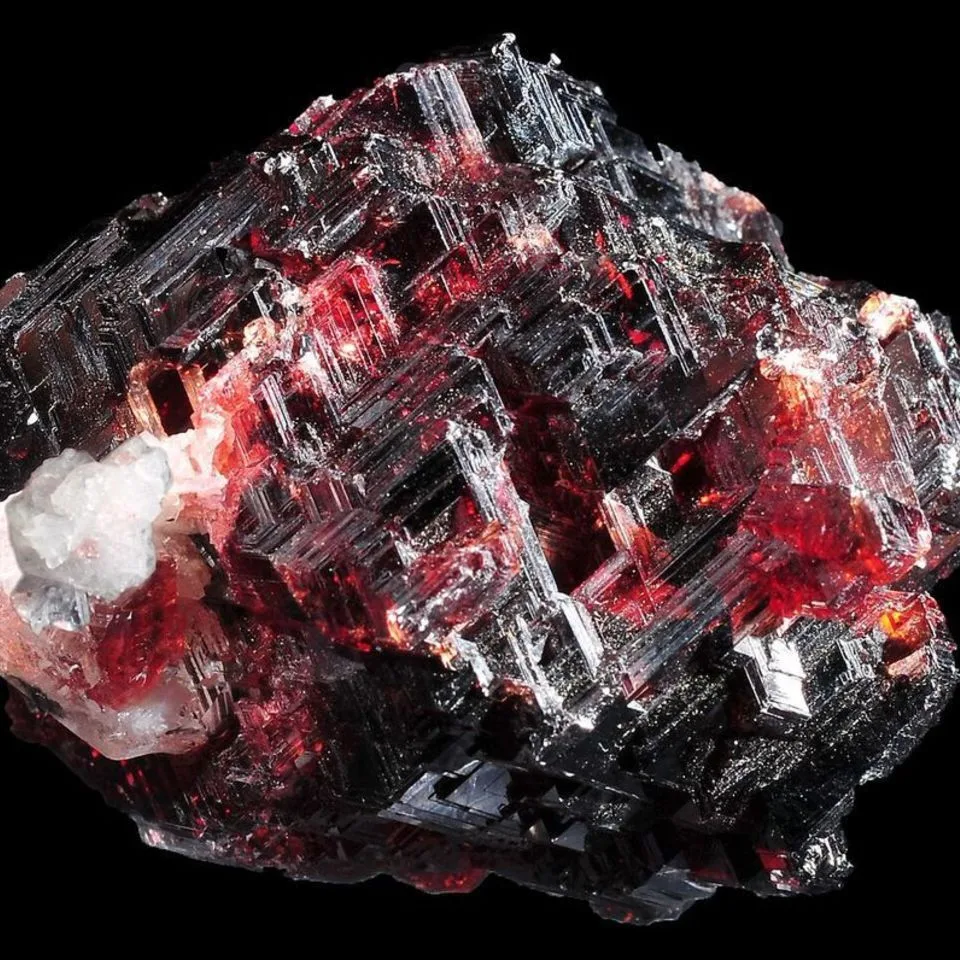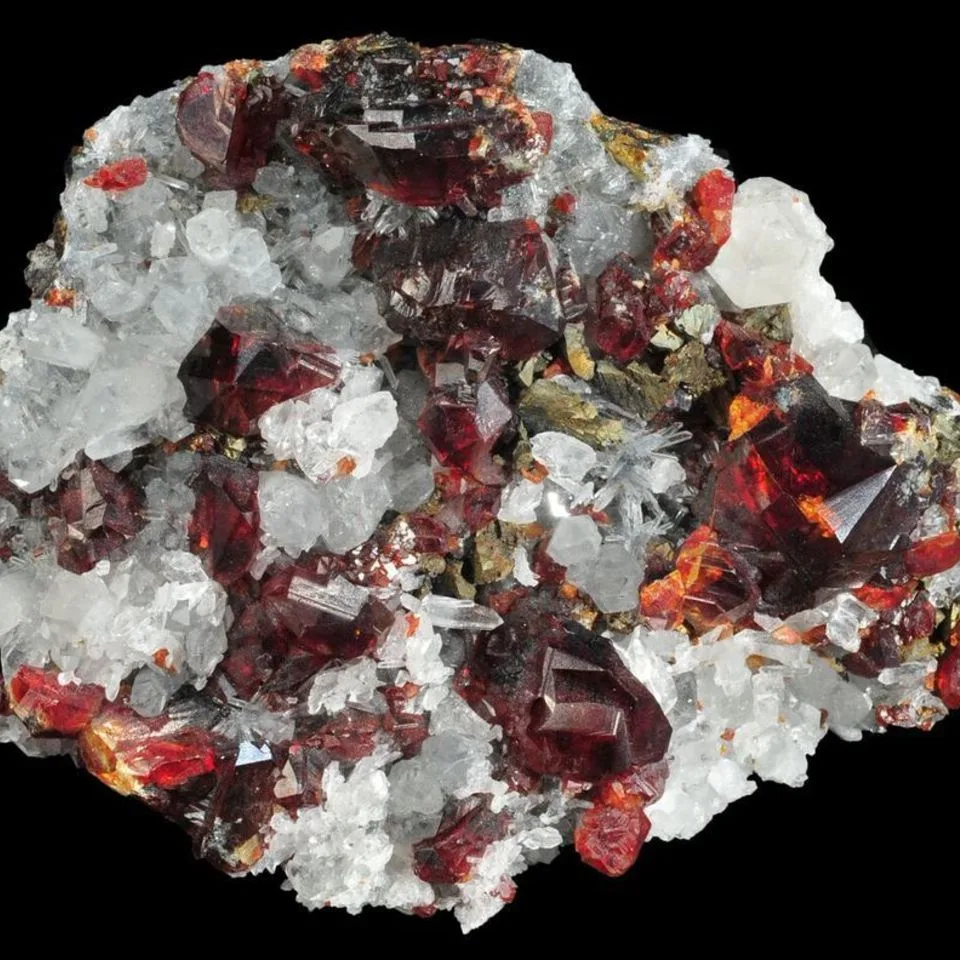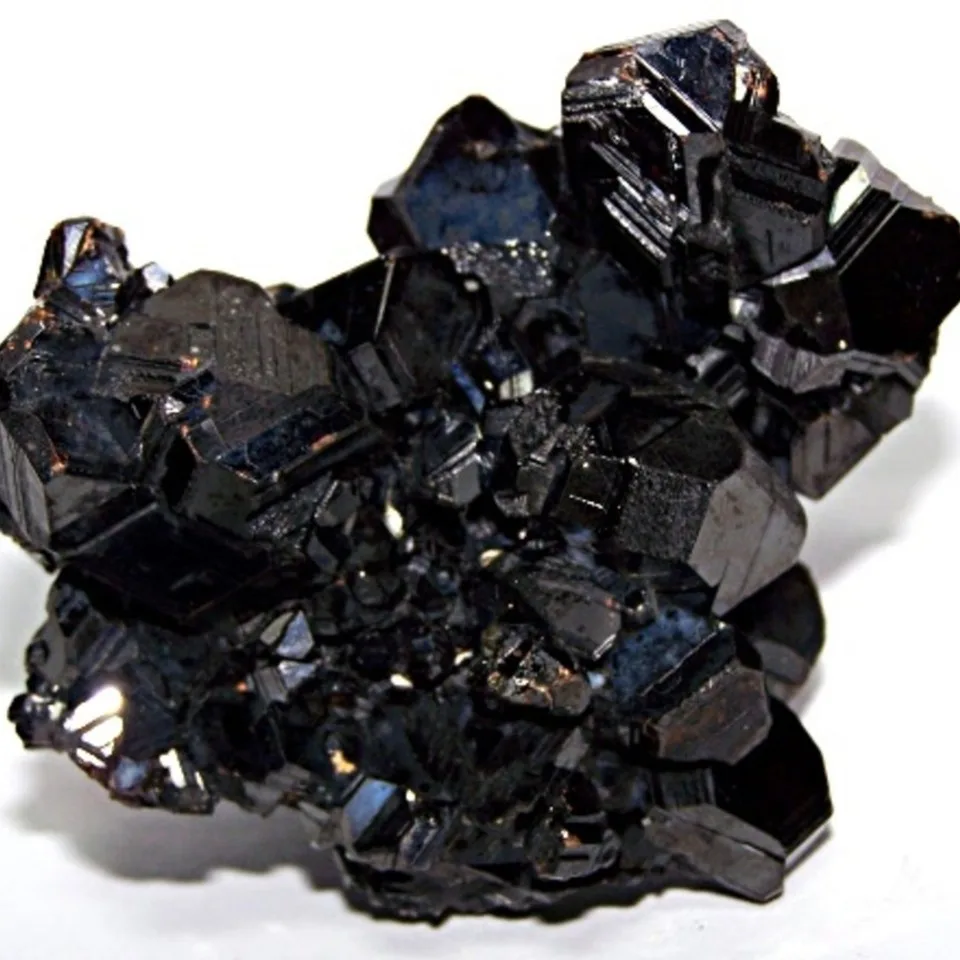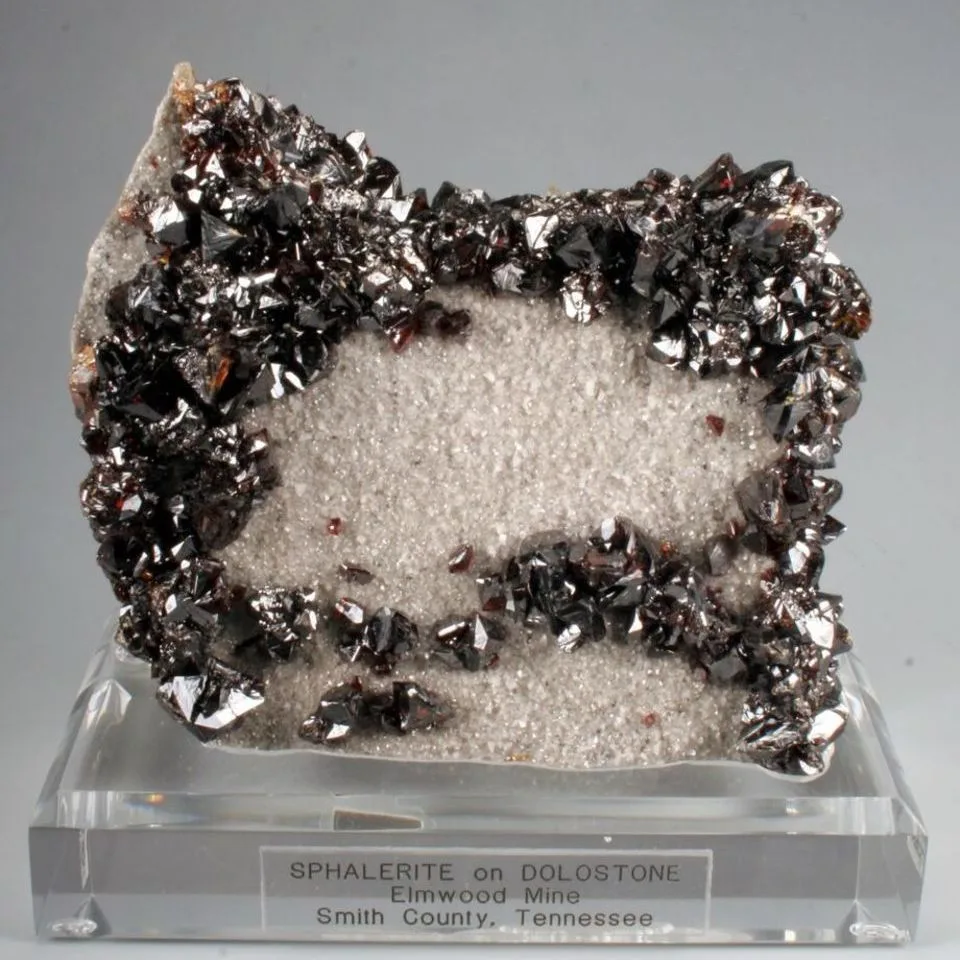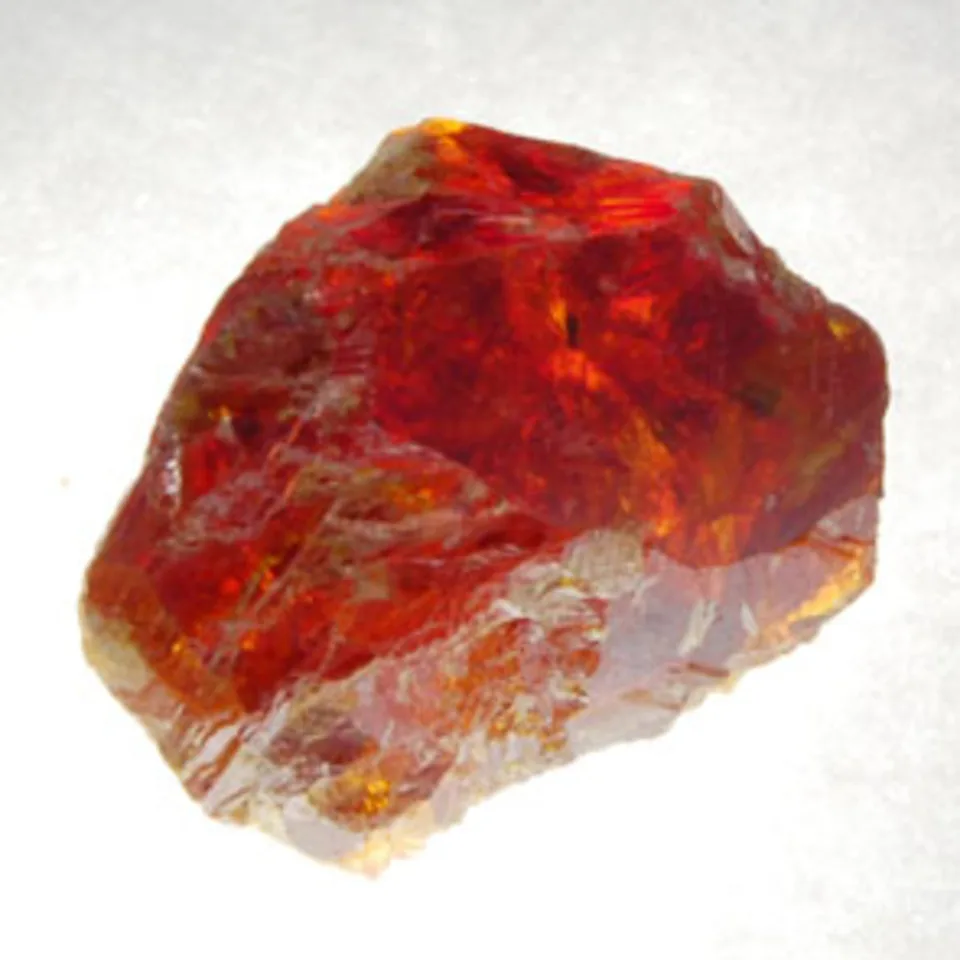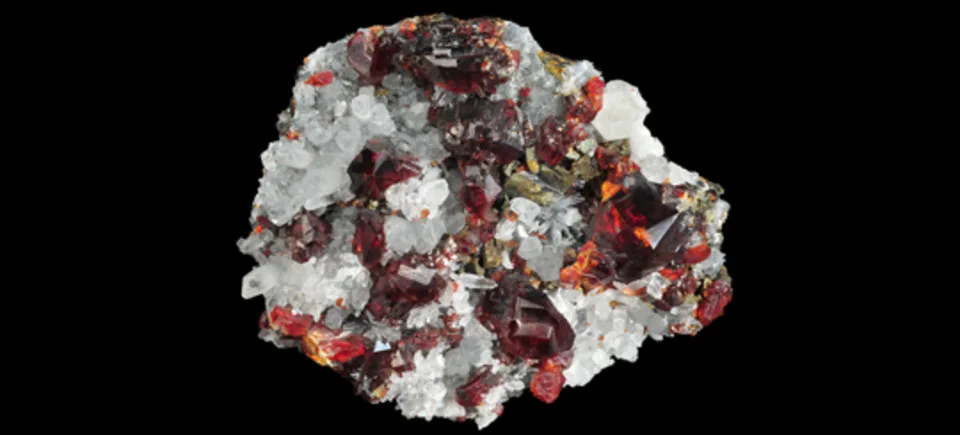Sphalerite
Sphalerite is an important ore of zinc and can make a rather attractive cabinet specimen as well. It can have excellent luster and associates with many beautifully colored minerals making it one of the best enhancers of many fine mineral specimens. Sphalerite is one of the very few minerals that has a total of six directions of cleavage. If all of them were to be perfectly cleaved on a single crystal it would form a rhombic dodecahedron.
Identifying all six directions in a single cleaved crystal is quite difficult due to the multiple twinning and the many directions. Only the fact that there is abundant cleavage at different directions can easily be seen in most cleaved specimens. Sphalerite can be difficult to identify because of its variable luster, color, abundant but obscured cleavage and crystal habits.
So difficult was sphalerite for miners to distinguish from more valuable minerals such as galena, acanthite and tetrahedrite, that they named it sphalerite which is Greek for treacherous rock and blende is German for blind or deceiving. The luster of sphalerite is truly its best attribute. It typically has a nice adamantine luster that really sparkles owing to its unusually high index of refraction and a fire greater than diamond’s.
Specimens of sphalerite are usually adorned with hundreds of small sparkling faces. Groups of faces can be symmetrically oriented into several different directions so that as a particularly gifted specimen is turned with respect to a viewer they are treated to several episodes of multiple and bright flashes. Transparent sphalerite has been cut for gemstones but its cleavage and softness limit its use as a gemstone to collectors only. The twinning of sphalerite is also special.
It can form a spinel twin which is a specialty of the mineral spinel. The spinel twin is where a tetrahedral crystal is twisted in the middle so that three points of the tetrahedron are in alignment with the other three points. These crystals are not usually completely developed in sphalerite but the indentations that the twinning causes are usually seen on some crystals in almost every specimen.
Sphalerite’s structure is analogous to the diamond structure. If every other carbon in the diamond structure is replaced by a sulfur atom and the remaining carbons are replaced with either a zinc or an iron atom then basically the mineral is sphalerite.
